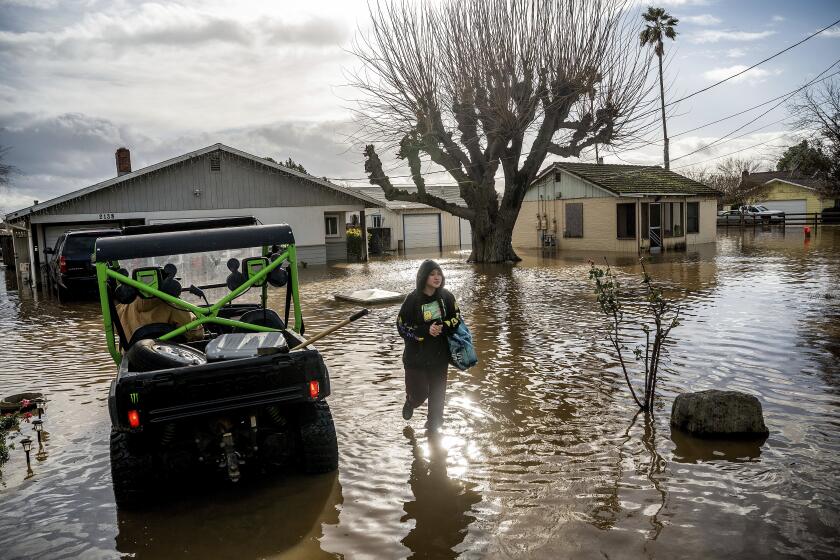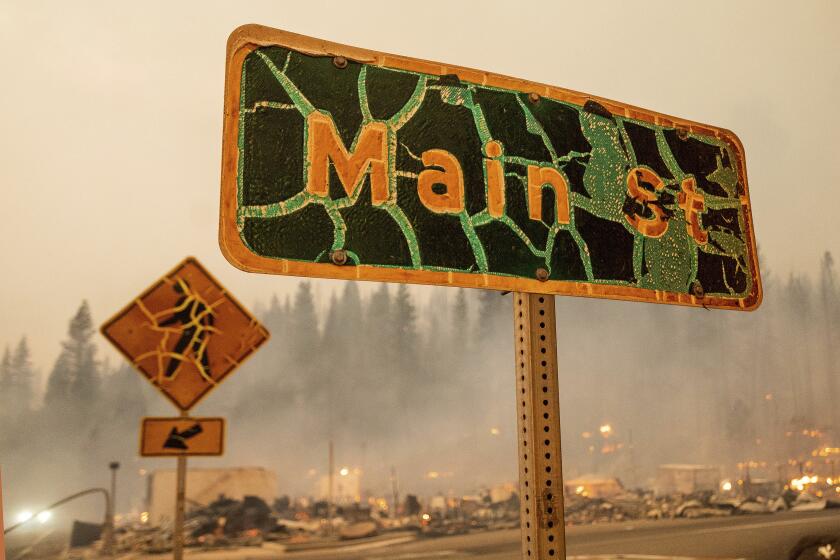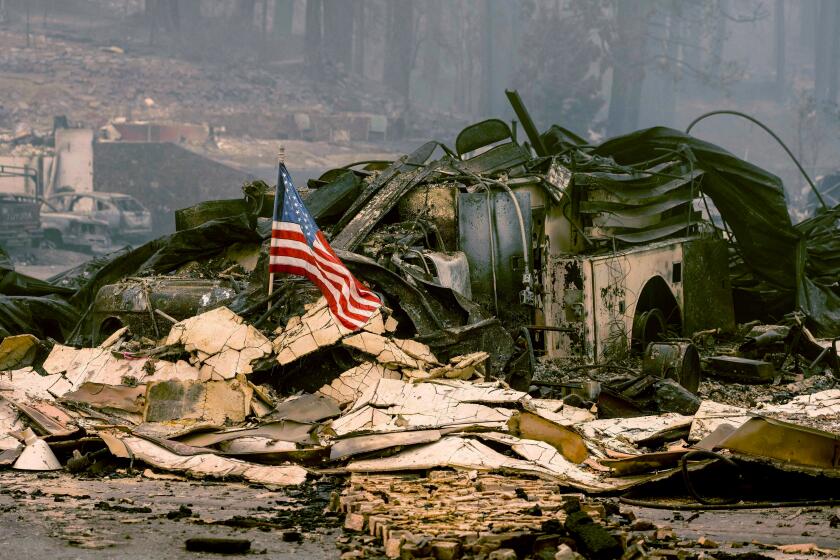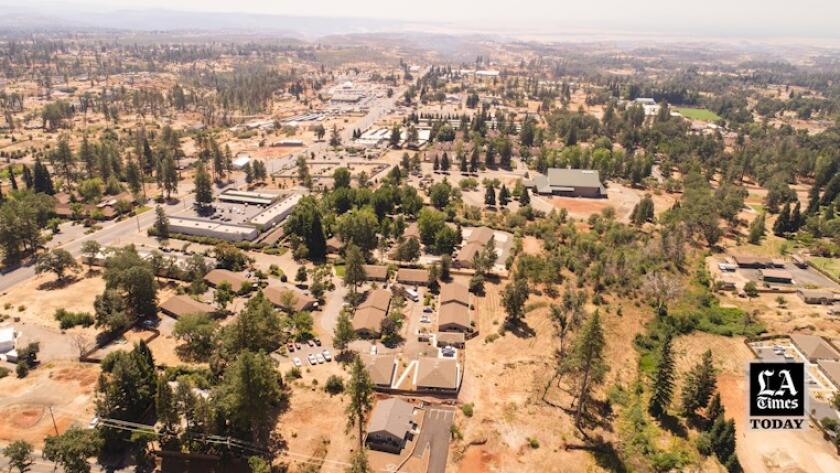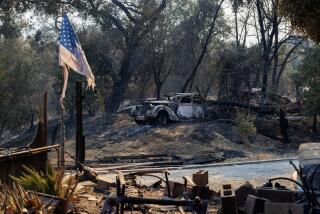Column: Time to panic? The home insurance market in California is collapsing because of climate change
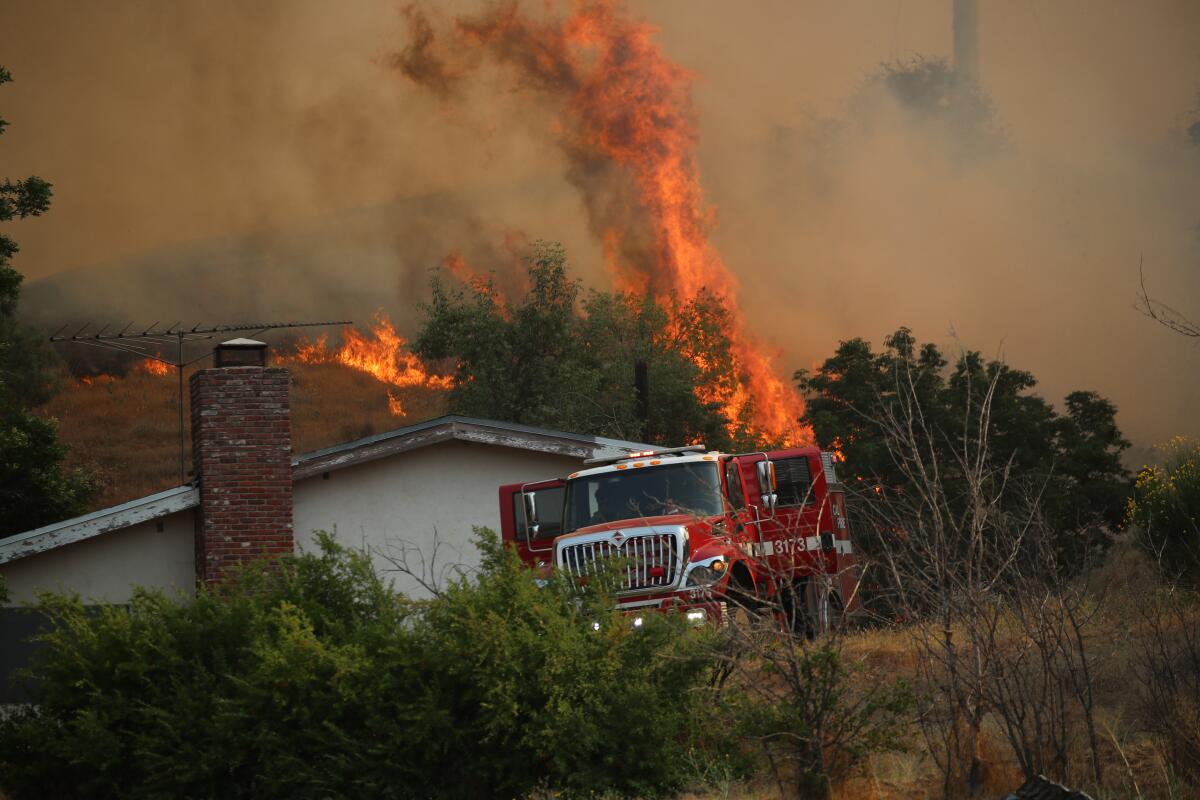
As another legislative session draws to a close in Sacramento, the problem lawmakers failed to fix is one of the most urgent facing Californians: the slow-moving collapse of the property insurance market as costs from climate disasters mount.
It “is not even a yellow flag issue. This is a waving red flag issue,” Gov. Gavin Newsom said Tuesday night when asked about the failure of the Legislature to act.
This year, multiple companies, including the state’s largest home insurer, State Farm, have announced they are no longer taking on new residential and commercial properties, citing wildfire risk. In fact, seven of the 12 insurance groups operating in California — together, responsible for about 85% of the market — have pulled back.
But backroom talks among elected officials to figure out a fair and workable path forward to entice insurance companies to write more — or in some cases any — policies didn’t go anywhere. Instead, lawmakers are vehemently pledging to hold public hearings this fall about the shrinking prospects for Californians seeking coverage for their homes and, by extension, their prospects for getting and hanging onto their mortgage during a deepening housing crisis.
The insurance companies refusing to write new policies for California homeowners is a wake-up call. Climate change must be part of the conversation about how and where we build.
If only insurance were as cheap as talk.
It is painfully clear that the speed and ferocity of climate disasters has intensified. Only eight months into 2023, the U.S. has recorded 23 climate-related disasters, each with damages of at least $1 billion, according to the National Oceanic and Atmospheric Administration. That shatters the previous record of 22 such disasters the entire year of 2020.
It is increasingly uncertain who is going to pay for all that damage, to, as much as possible, make whole all those upended lives.
Should Californians living in the most dangerous places, whether facing wildfires, flooding or sea-level rise, shoulder more of the cost for their risk? And does it matter that many such communities are low-income, filled with residents who have sought out these places precisely because they were priced out of cities that have refused to build more affordable housing?
Or should risk be shared among us all, no matter where we live? Higher insurance premiums across the board to stabilize an industry that we all need.
Or, should insurance companies be forced to somehow continue carrying the burden of climate disasters?
Rumor has it that a Legislative fix was held up largely because no one could agree on an answer. Even a compromise wouldn’t be politically popular, which may be why that part of the debate has stayed largely behind closed doors.
But as Newsom pointed out, the pressure building on the insurance industry is “America’s coming attraction in terms of impacts of climate.”
That holds true for California with its eroding coastline, mudslides and fire-prone mountains; for Florida, Louisiana and Texas with hurricanes; for places such as Kentucky and Vermont where extreme weather has led to devastating floods.
Even for renters and car owners, the cost of insurance is rising and will rise further as temperatures do.
“People can only afford so much, even middle-class people or upper-middle-class people. Throughout the United States, in different geographies, we’re reaching a point where climate change is driving to an uninsurable future,” said Dave Jones, a former California insurance commissioner and current director of UC Berkeley’s Climate Risk Initiative. “The risk is too high, at almost any price.”
Let us be clear on this: Of course, insurance companies want to maximize their profits. Of course, some of their claims around climate risk are posturing to increase rates. And yes, other factors including inflation on construction are part of the equation.
Climate change should not be a free pass to gouge consumers — despite all those disaster claims, insurance companies are still making money, though their profit margins might not be as thick as in the past.
But insurance is the safest bet against personal calamity, climate-induced or otherwise, so we need insurers to remain in the market. Which means we need to acknowledge that climate change has altered the math on protecting the places we live and work.
“How do we work together to solve this in a way where everybody feels they’re sharing a lot of the burden?” asked Assemblymember Reggie Jones-Sawyer, who is a member of the Assembly Insurance Committee but wasn’t directly involved in the negotiations in recent weeks.
Jones-Sawyer said he’s deeply concerned about passing along the financial burden of climate disasters to consumers, specifically citing residents in his South L.A. district. In California, with its poverty and entrenched income inequality, many just can’t afford it.
“On the Assembly side, it was a great concern that we did not overprice our constituents,” he said. “If your homeowner’s insurance went from $2,000 a year, which is relatively low, but skyrocketed to $6,000 a year, in one year, who’s monitoring that? When it gets to that number, it becomes a little too much.”
California needs a plan for how and where we will live in the future.
In the short-term, fixing this mushrooming insurance crisis will probably fall to California’s insurance commissioner, Ricardo Lara — perhaps through an executive order from Newsom, though the governor doesn’t have authority to regulate insurance.
Lara, of course, does, but his power isn’t unlimited. And so what we will probably see in coming weeks is a three-pronged plan meant to attack the immediate problem while leaving the larger, more profound questions for later.
First, Lara will probably work to bolster the state’s FAIR plan, the insurance of last resort for many — including Newsom, who owns a home covered by it.
Second, how we assess risk will probably be changed from models that look at past disasters to models that project forward, taking risks of climate change into account.
And third, Lara will probably seek to streamline the process of raising rates — which in California can be hard to do with regulations designed to protect consumers from obscene price hikes.
But this isn’t just about insurance. It’s just that insurance is the first system to face collapse.
“You can have debates about these various proposals, but what’s underlying all that is climate change, and it’s only going to get worse,” Jones said.
::
One way or another, all taxpayers will be forced to pay more for the worsening effects of climate change.
Even if Lara requires insurance companies to account for forest thinning and other other landscape mitigation projects that reduce the risk of disasters — which he should — someone will have to pay for those projects. That “someone” will be taxpayers.
And in the many high-risk places in California, where mitigation probably won’t make much of a dent, it will be taxpayers who will be on the hook to rebuild these communities after an increasingly inevitable disaster.
There are already signs we’ll be paying more at the federal level.
Consider that just last month, FEMA Administrator Deanne Criswell took the alarming step of warning that the agency is running out of money after a year of nonstop disasters.
With climate change, California must confront hard truths on how and where we will live in the future, and what that means for decisions made today.
The roughly $3.4 billion it has left in its Disaster Relief Fund, mostly used to reimburse communities for long-term recovery efforts, will be gone by this month. In response, President Biden has asked Congress for an additional $16 billion.
“Every American rightly expects FEMA to show up when they are needed to help in a disaster,” Biden told reporters during a tour of the damage Hurricane Idalia left in Florida. “I’m calling on the United States Congress, Democrats and Republicans, to ensure the funding is there to deal with the immediate crises, as well as our long-term commitments to the safety and security of the American people.”
This isn’t the first time FEMA has been in this predicament and it probably won’t be the last, leaving taxpayers to continually bail out the agency, so the agency can continually bail out communities destroyed by climate-change-fueled disasters.
Now imagine what will happen if there’s also a full-on breakdown of the insurance market. This possible eventuality was the focus of a recent hearing of the U.S. Senate Committee on Banking, Housing, and Urban Affairs.
“Without insurance, millions of families will be at greater risk for climate crises,” Sen. Elizabeth Warren (D-Mass.), a member of the committee, said during the hearing. “And as whole communities lose access to insurance, the impact is going to be felt all the way through our economy.”
That would be the greatest of disasters, and a place where California doesn’t need to lead on climate.
Watch L.A. Times Today at 7 p.m. on Spectrum News 1 on Channel 1 or live stream on the Spectrum News App. Palos Verdes Peninsula and Orange County viewers can watch on Cox Systems on channel 99.
More to Read
Sign up for Essential California
The most important California stories and recommendations in your inbox every morning.
You may occasionally receive promotional content from the Los Angeles Times.
